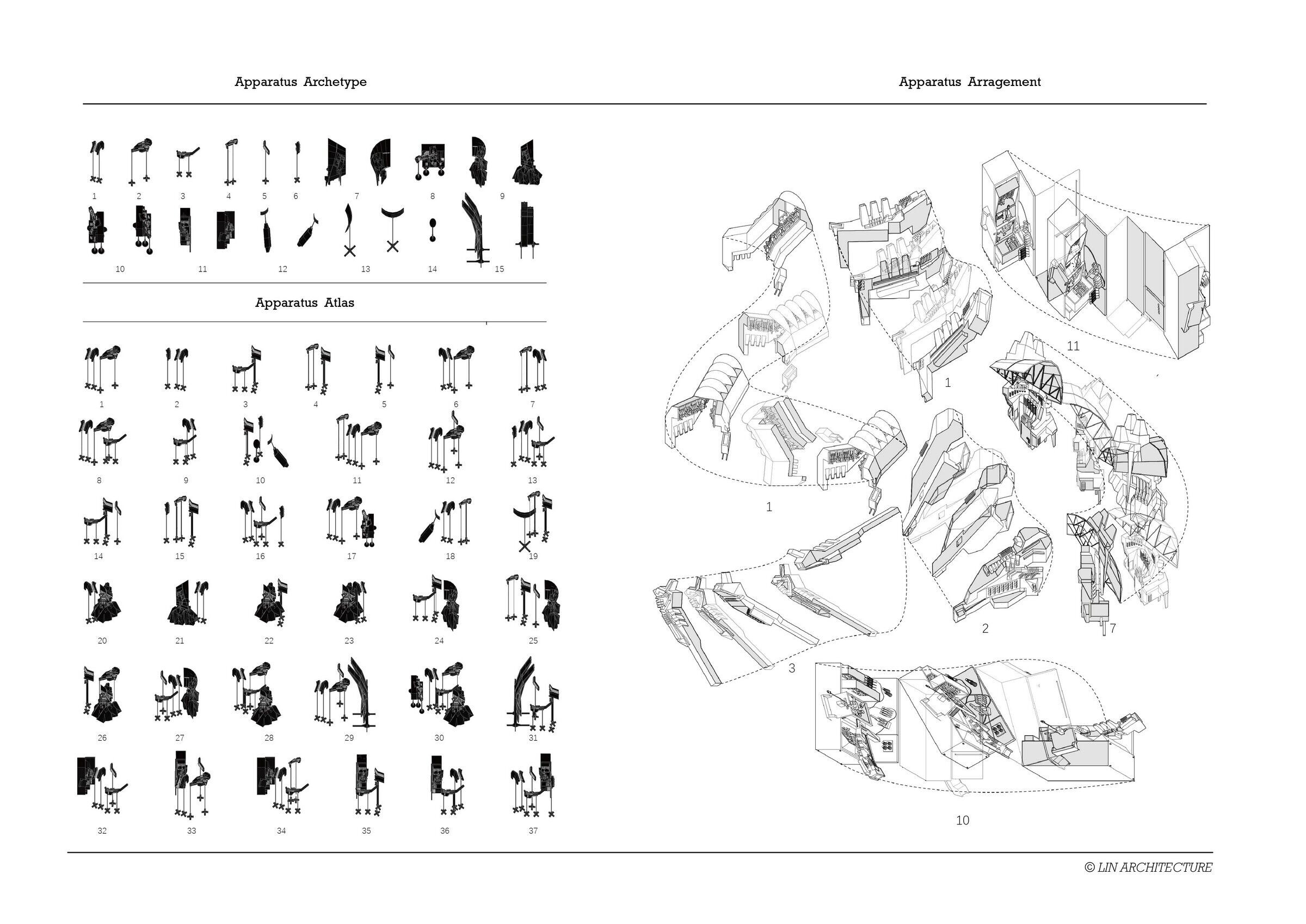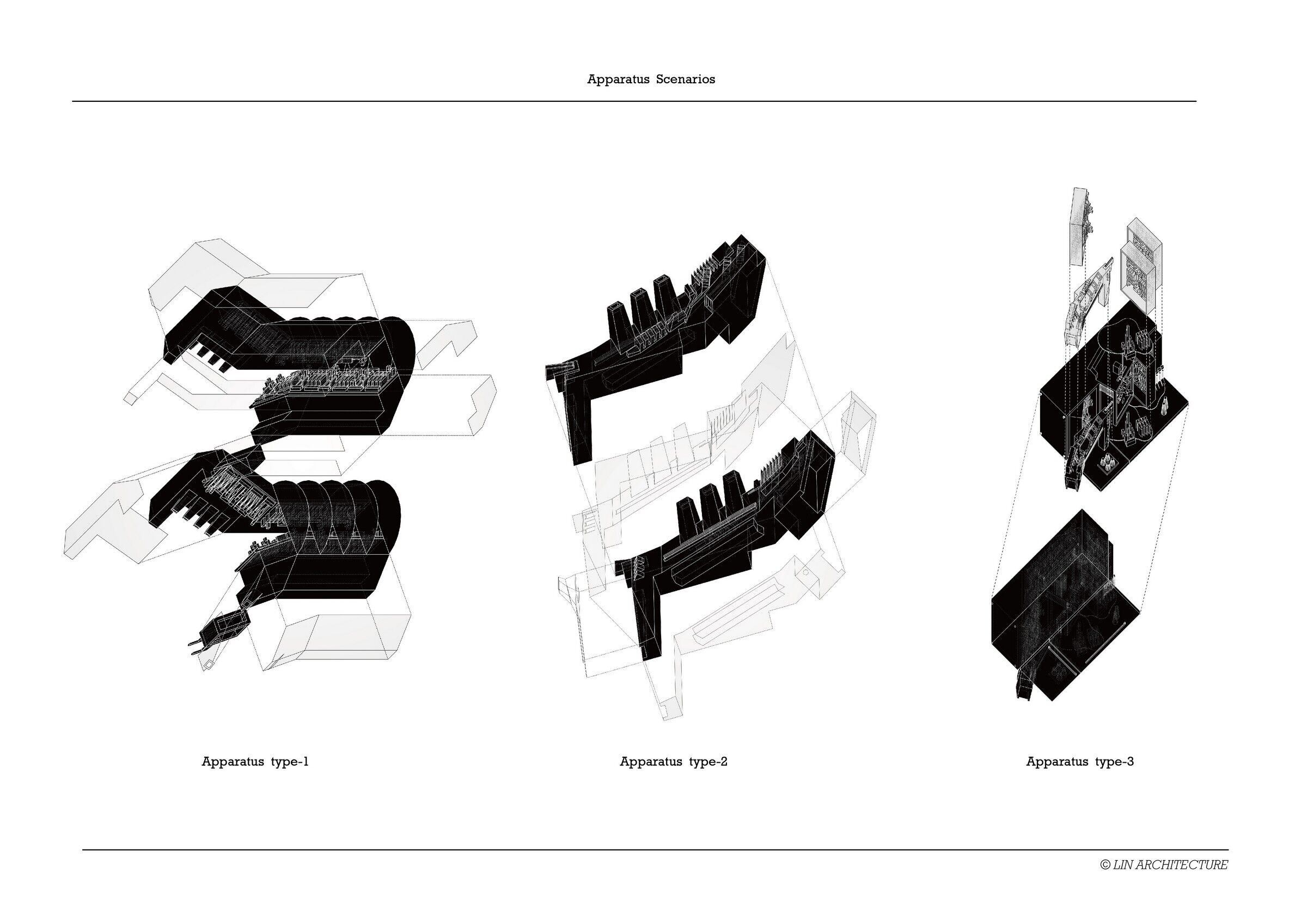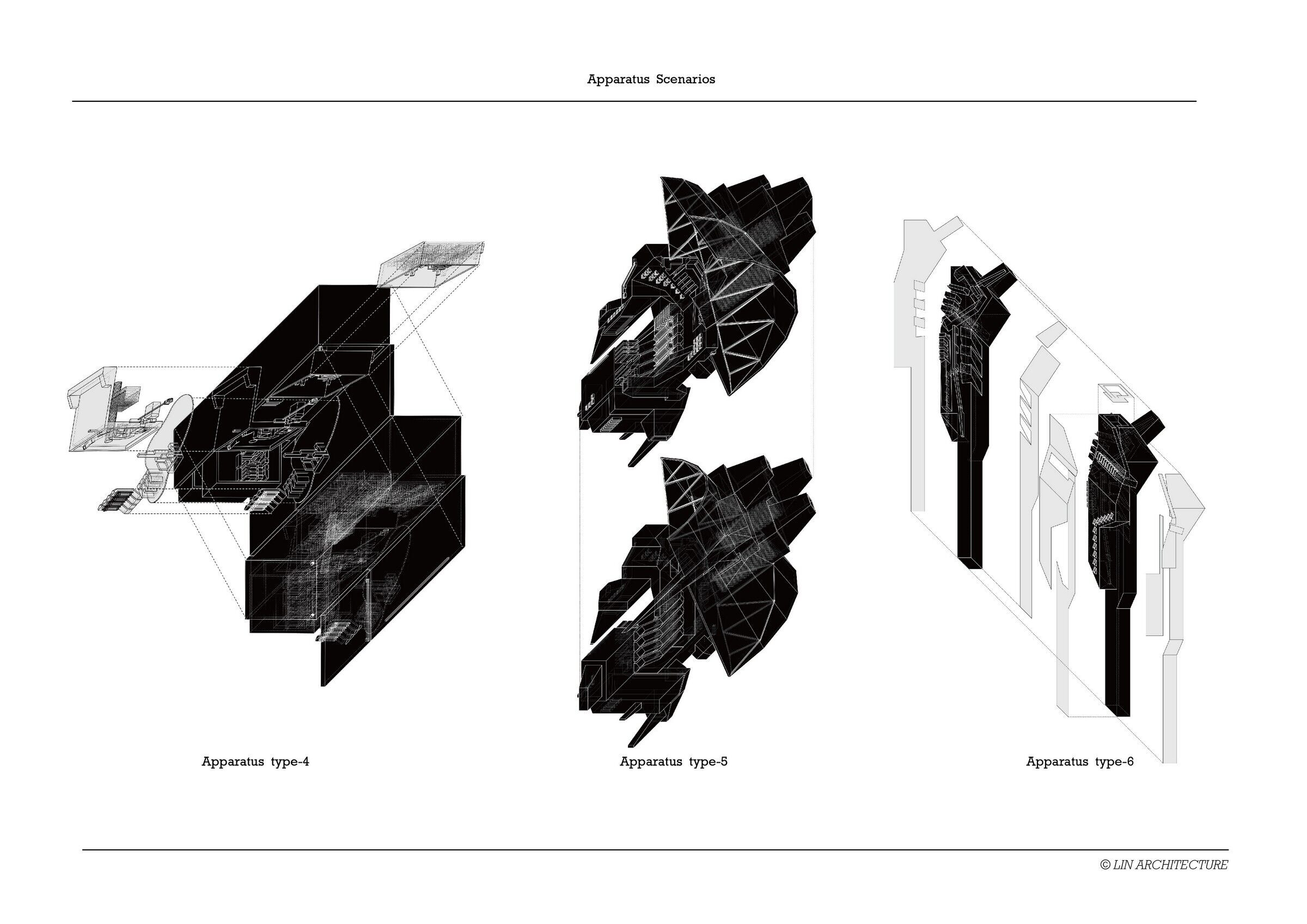The Ninth Bi-City Biennale of Urbanism\Architecture (UABB) officially opened to the public in Shenzhen on Sunday, and it will run until March 12, 2023. The main exhibition venue is located at what used to be the Kingway Brewery in Luohu District (Golden Beer Shop 9 Dongchang Road, Luohu District Shenzhen). Themed “Urban Cosmologies," the three-month exhibition in Shenzhen is jointly curated by architecture and urban planning scholar Lu Andong, young architect Wang Zigeng, and design curator Aric Chen.
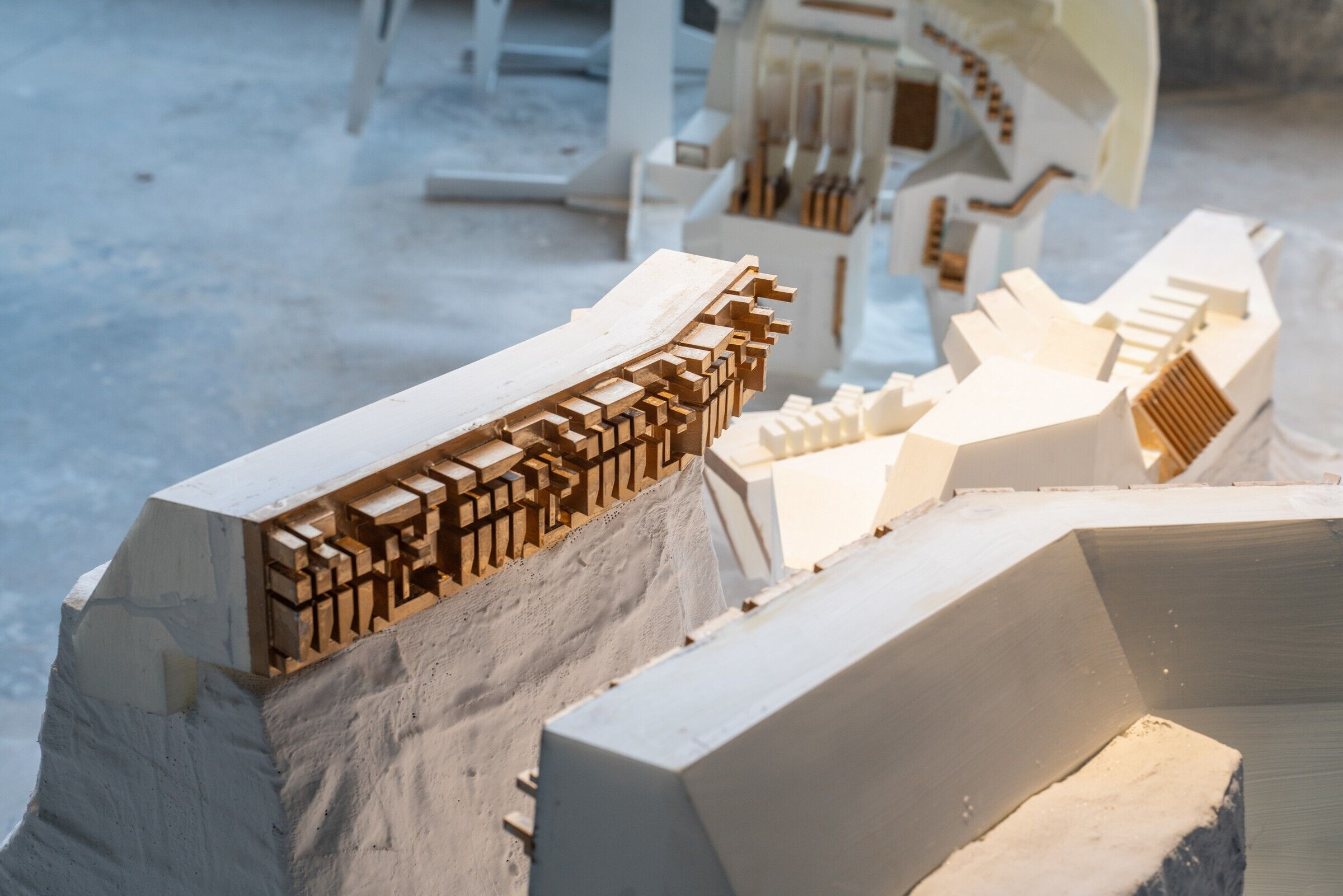
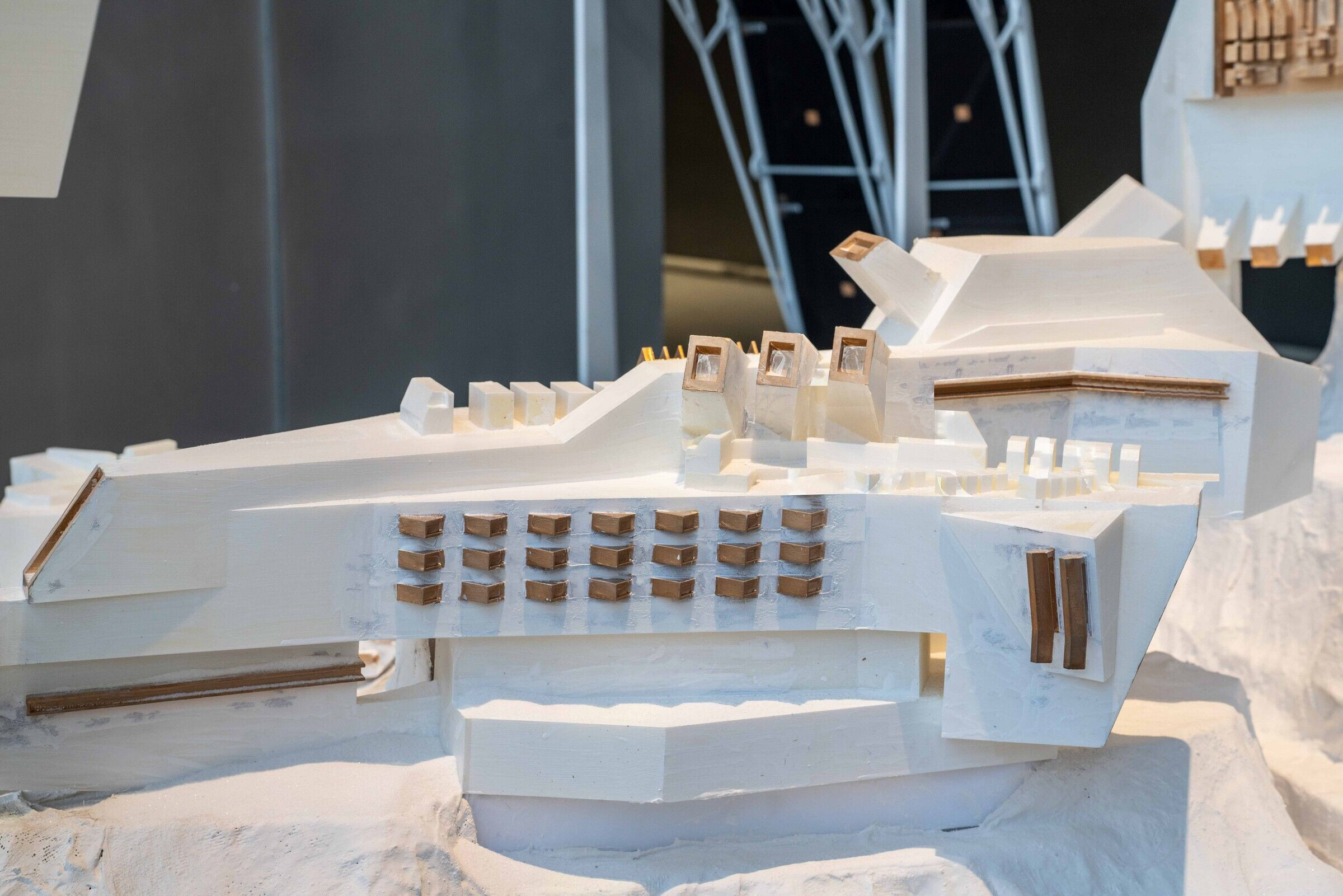
LIN architecture, in collaboration with Inlighttech Team, presented a narrative work, “Exodusolarism: Walking Cities in Light”, in the “Future Community” section. The installation works take "Exodus" as the background and present the story of human beings escaping to a "better sun" and "better earth" due to the expansion and collapse of the sun. Taking "environmental control" of Banham’s air-conditioning as a metaphor, the development of human beings becomes the inside of the "environmental bubble", and the earth's life outside, making the earth contradictory as a "leaky refrigerator" that humans have failed to cool and control. The earth and the sun are positioned as colonies of capital and human development and expansion, and environmental regulation is the means and processing of colonization. After "exodus from the earth", the sun in the floating starry sky has almost become the only source of energy capitalism, and the space of the solar system is contested by humans. The work proposed as Koolhaas asks 'after the core of the sun collapses and the exterior expands, is there still a "better sun" after the exodus from the solar system?'
Formally, the exhibition speculatively unfolds the spatial narrative of "internal" and "external" control of the global environment. The exhibition design uses a new nano-structural color technology to improve the color performance of solar cell devices without affecting power efficiency, leading to a rich color and space experience with different perspectives.
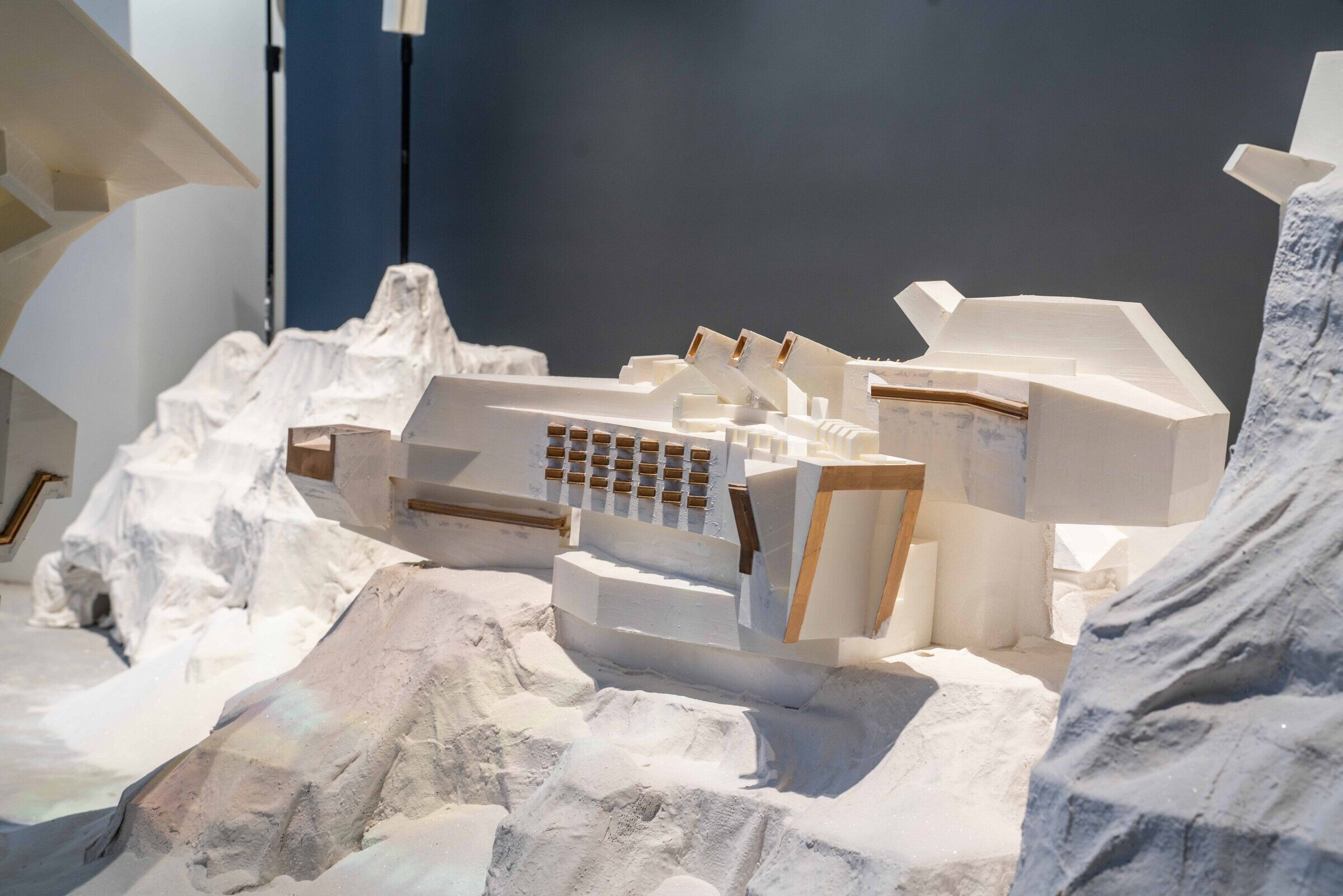
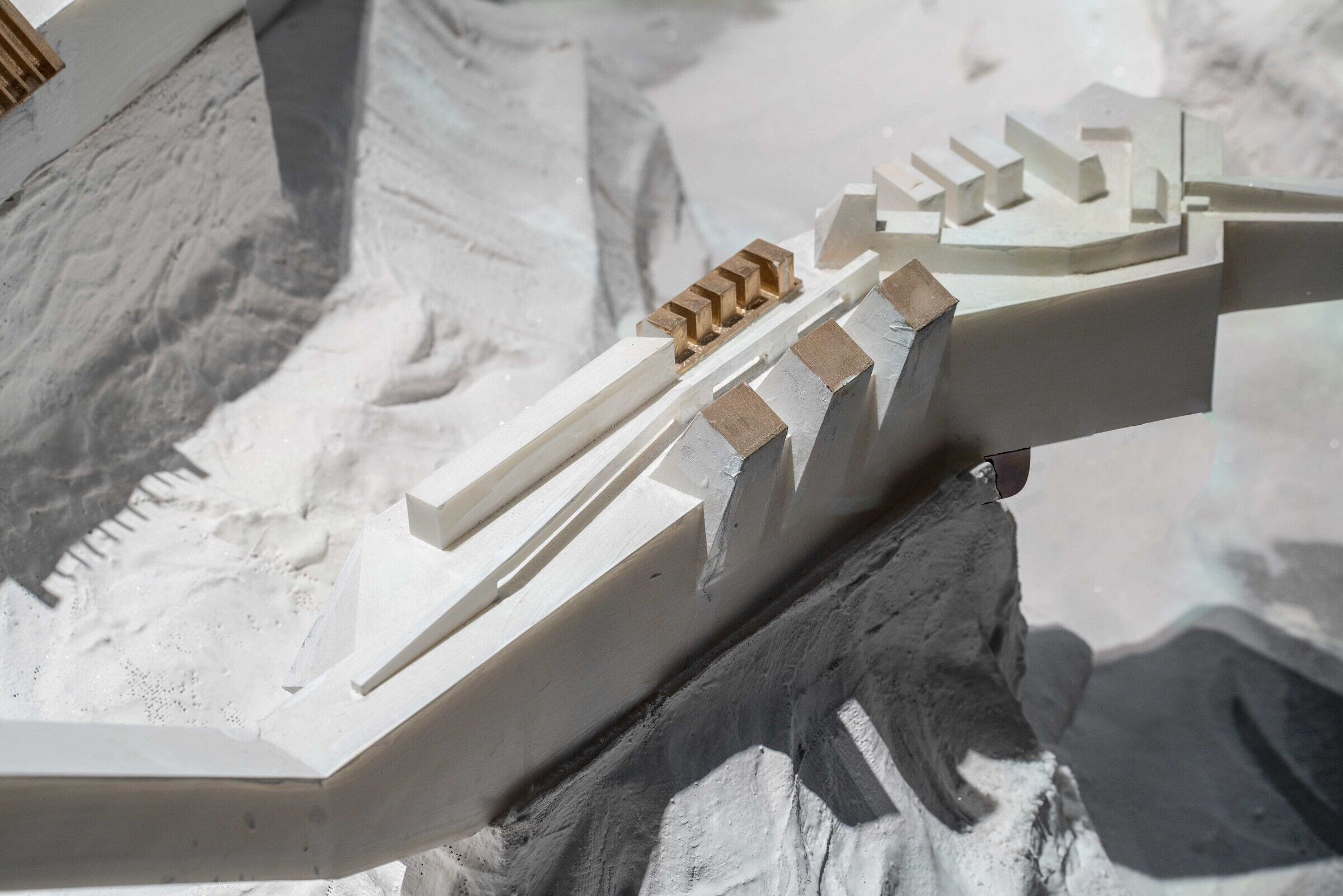
“Cosmic Environment Control”
According to Banham’s theory, the controlled environment by human beings through air conditioners is a formless bubble wrapped with various furniture, forming the facade and environment that lose the regional connection with the context of architecture. From the perspective of greater global environmental control, the Kyoto Protocol and the desire to turn on air conditioners and use carbon-based energy have produced contradictions, just like installing an air conditioner in a refrigerator to exhaust heat. It will inevitably lead to water seepage and freezing in the second order air-conditioned refrigerator. From the perspective of global ecology, human beings are nothing but constant temperature, dependent on bacteria in the "earth's refrigerator", but they are insatiably grabbing at the earth's resources in the form of capitalist development. It's only a matter of time before humans compete for the sun and its solar energy, as a metaphor for the ultimate energy source - like coal resources, marine resources, and oil resources. In the view of P. Sloterdijk, the Crystal Palace of the London World Expo (1851) has become a greenhouse and a colonial base, a prototype of colonization, and a base for environmental control and resource exploitation.
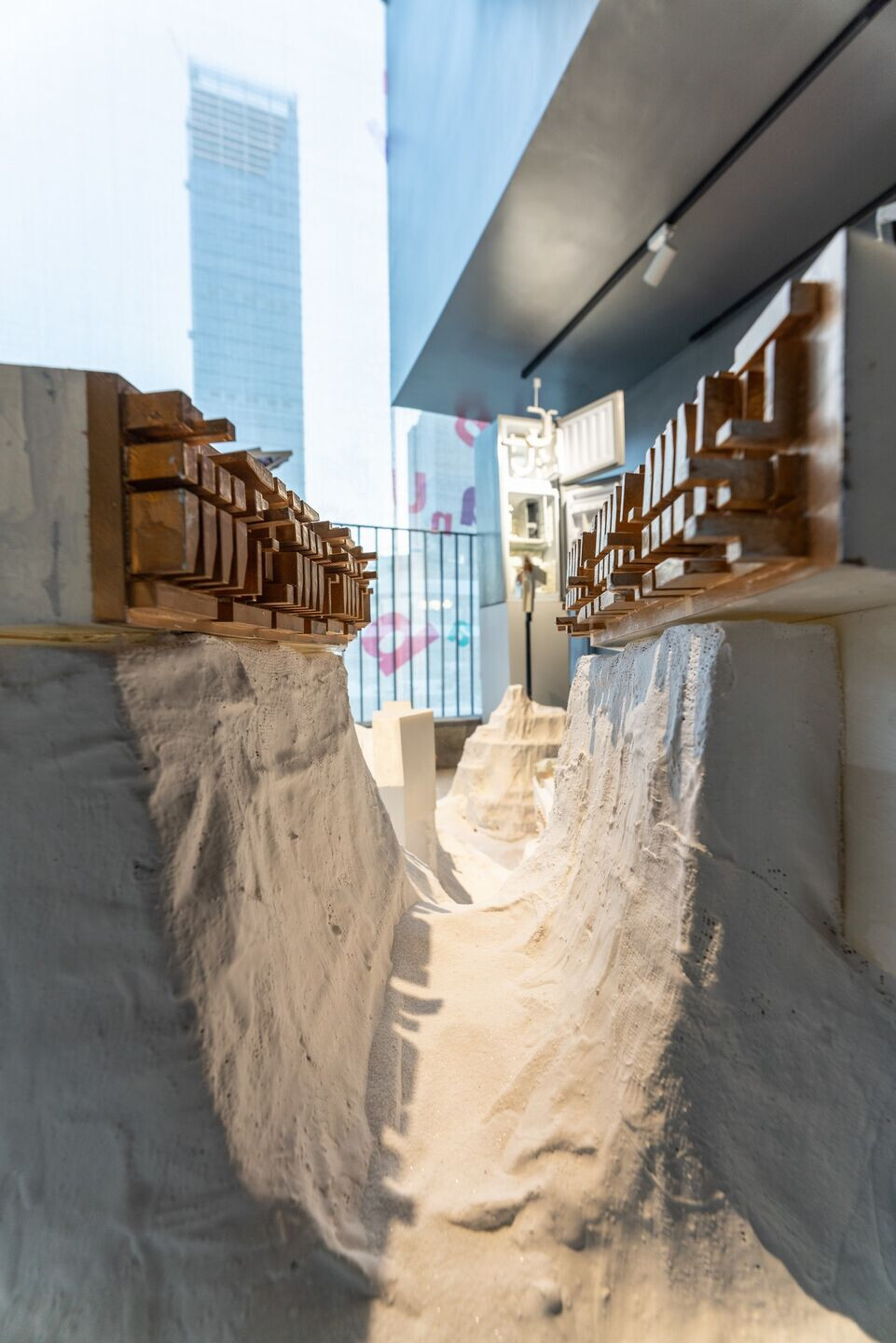

“The Ultimate Sun”
Berlin engineer Konrad Zuse, a pioneer of computers and programming languages, pointed out that the entire universe can be described as the output of deterministic computation as a single cellular automaton. From the viewpoints of "pan-computationalism" and "panpsychism", M. Pasquinelli criticizes the computer universe composed of light, information, energy, and its hegemony in an analogical way, presenting a surplus, capitalization, and crisis of spectacle for the universe. The narrative structure of its transformation also provides a sun worshiped as the ultimate energy source; the sun has become the ultimate pinnacle of capitalism due to environmental control politics, including energy calculation, consumption, sacrifice, accumulation, and surplus of information capital. And G. Bataille likened "solarity" to the burning hunger of tigers that prey on, die, rot, and return to the ecological cycle. It is the end and castration of the phallus of capitalism expansion. The sun will eventually collapse into its core and explode.
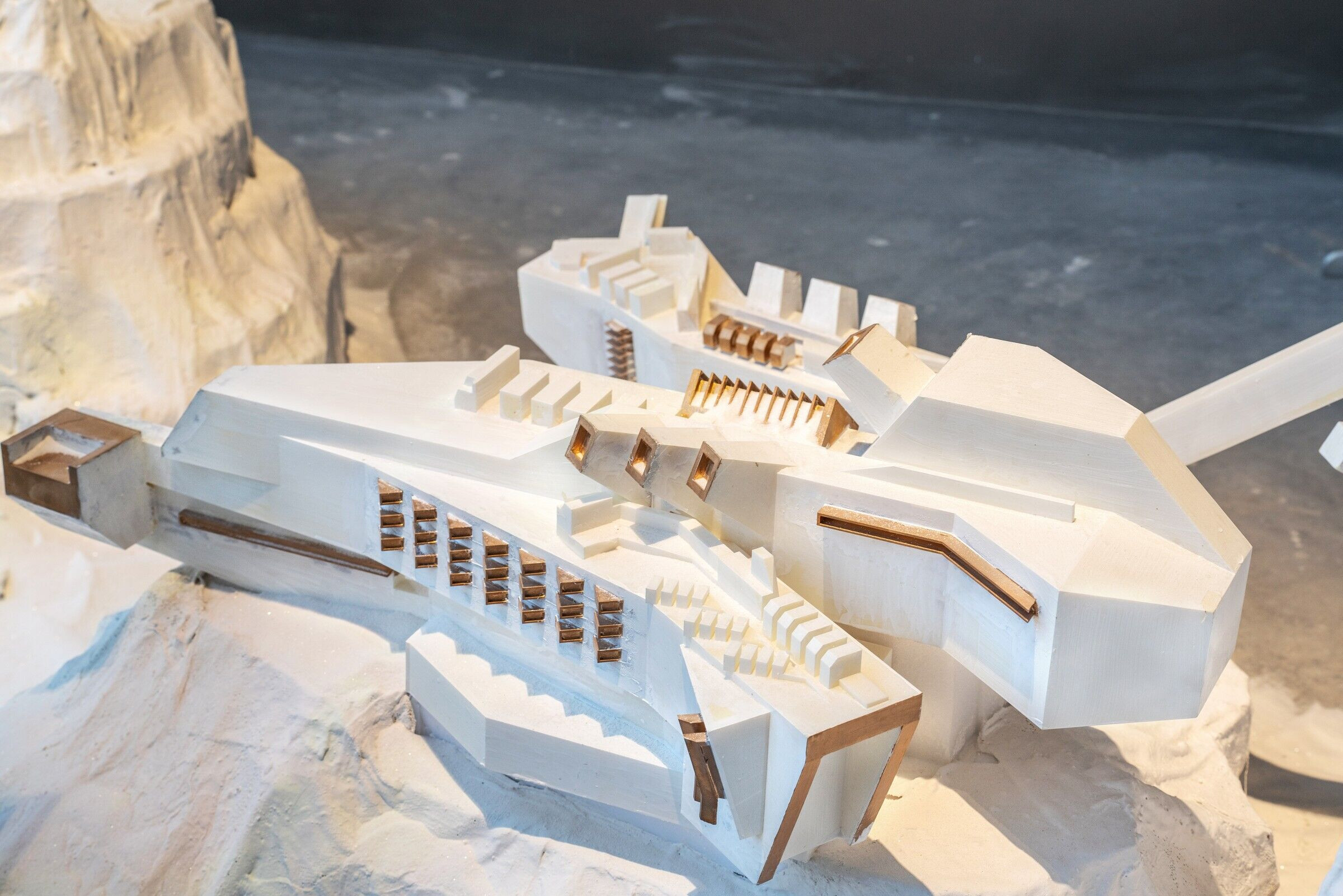
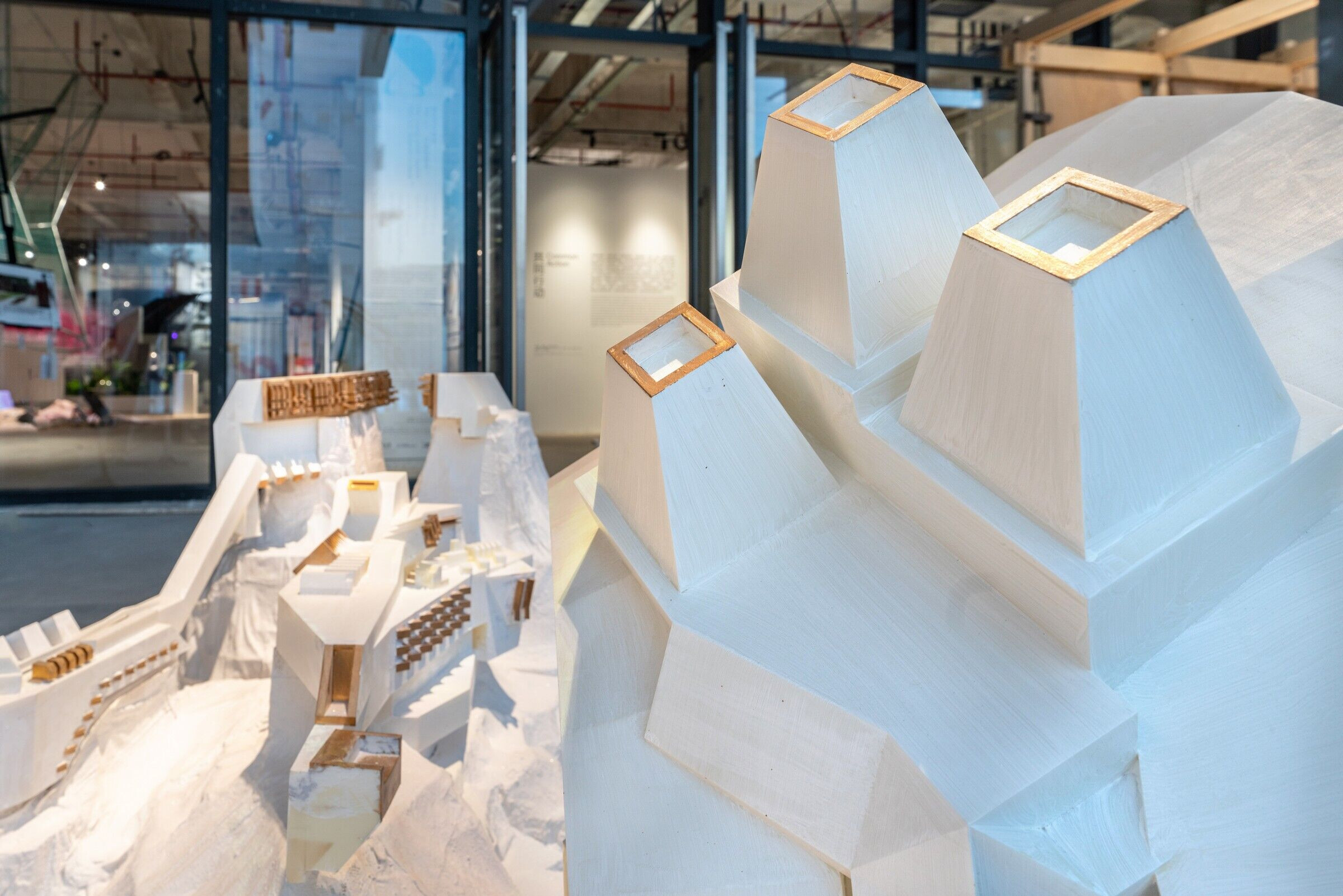
“Exodusolarism Metaphor”
The pipe-like form representing human development unravels and knots in the continuous escape, carries the urban texture, flies out from the refrigerator with horizontal seepage, and experiences four chapters: "Air Conditioner in Refrigerator", "The valley of colonization", "The ship of war", and "The city of melting light". They unfold a series of metaphors in turn: refrigerator - environmental control, cone - industrial pollution, seepage - global warming, pipe - building block, environmental bubble - earth, crystal palace vault - interstellar colonization, mothership - war, deck - city, sun - ultimate energy, walking city - camel - energy storage, discursively pulling apart the "internal" and "external" spatial narratives of global environmental regulation.
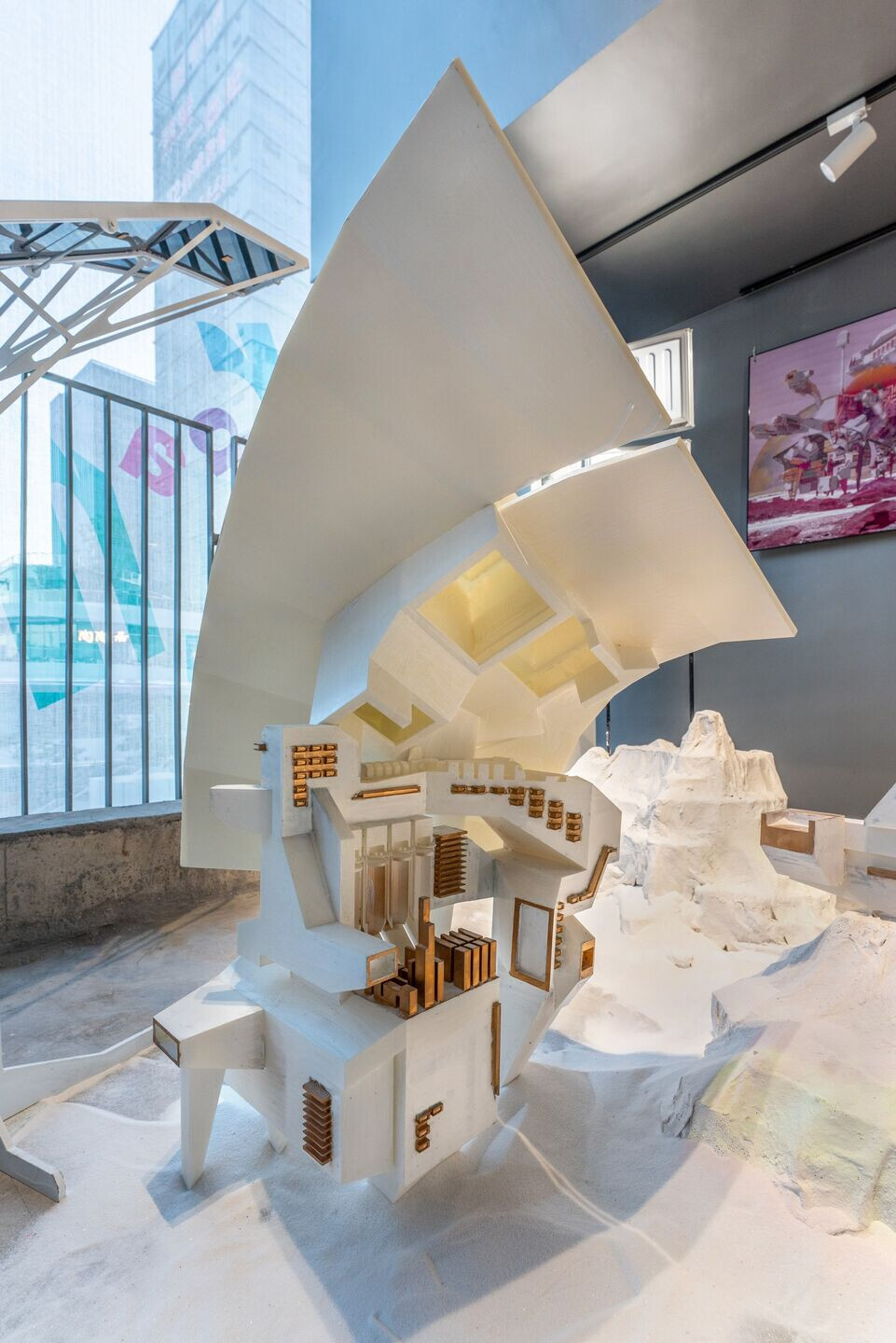
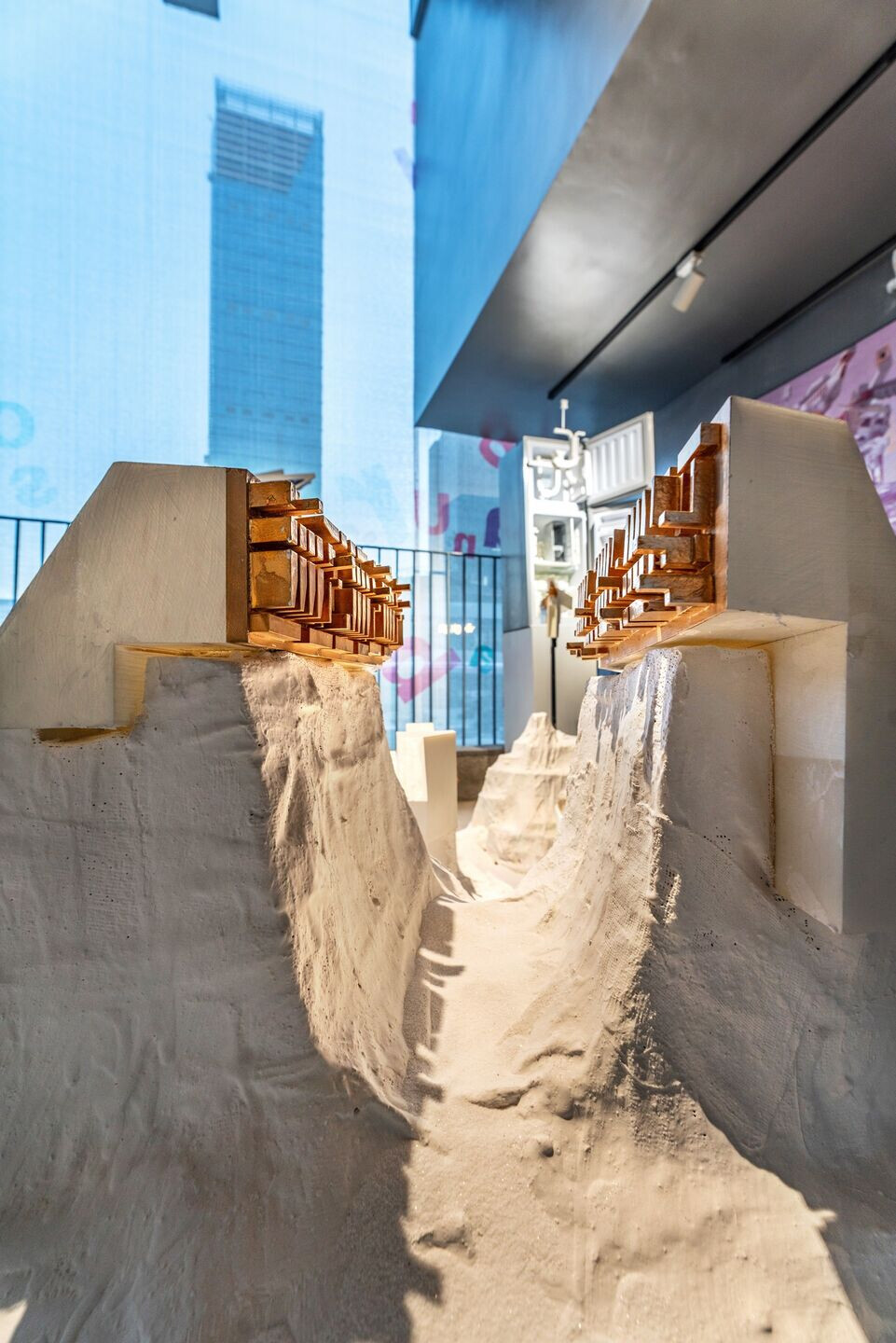
“Installation Exhibition Format”
The exhibition, with solar panels installation and models, can achieve the photoelectric conversion and allow energy to interact with people in the form of color and light. It also proposes a new solar punk aesthetic and environmental aesthetics by influencing the ecology and habitat of the "human environment" in the exhibition through electric energy and light energy.
The installation building involved resin, photovoltaic panels, and nano-photochromic pigment coating construction, and its interaction can be realized through the self-producing light signal and the color difference observed from different angles and incidental light. The model itself can also be used for urban lighting and power source.
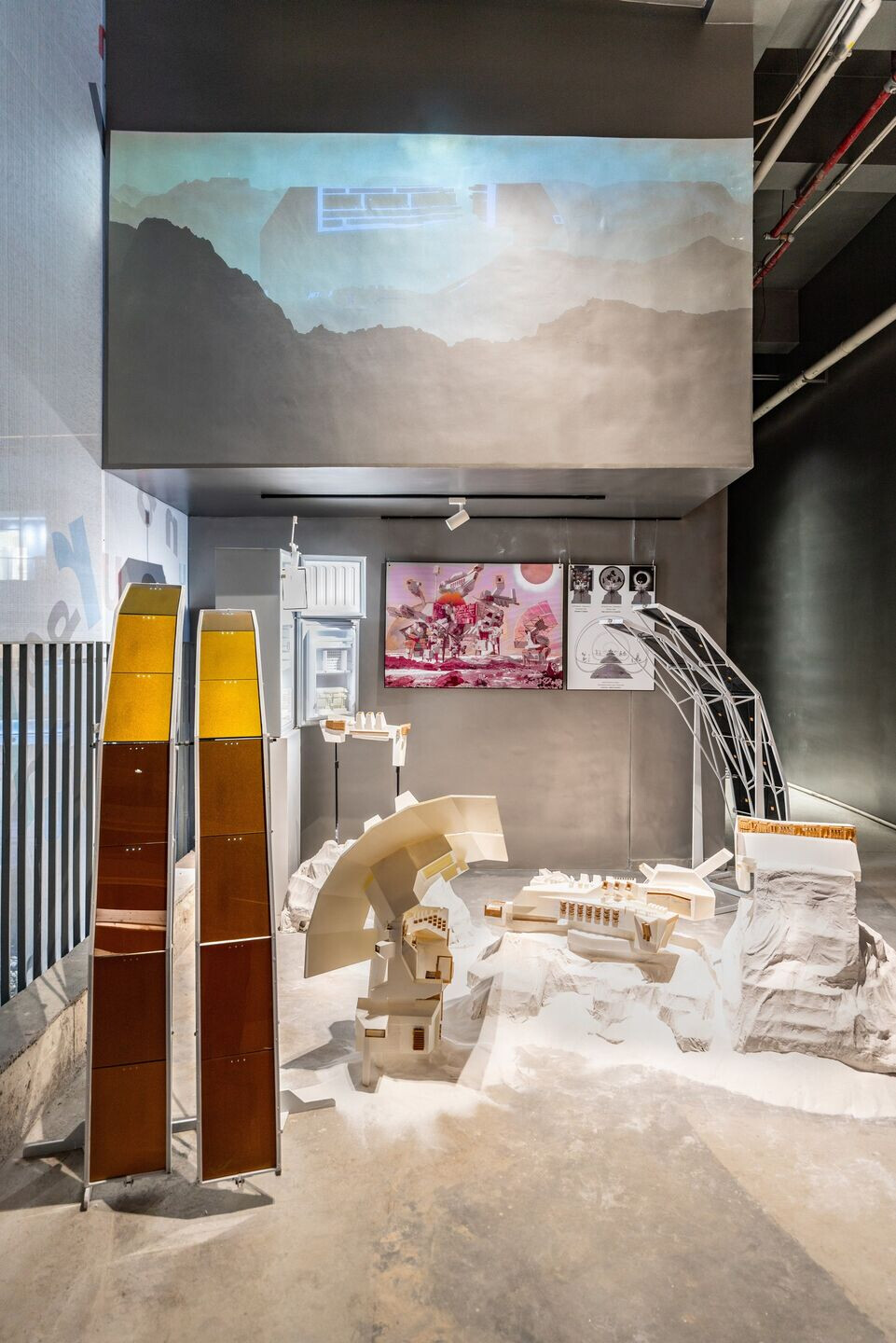
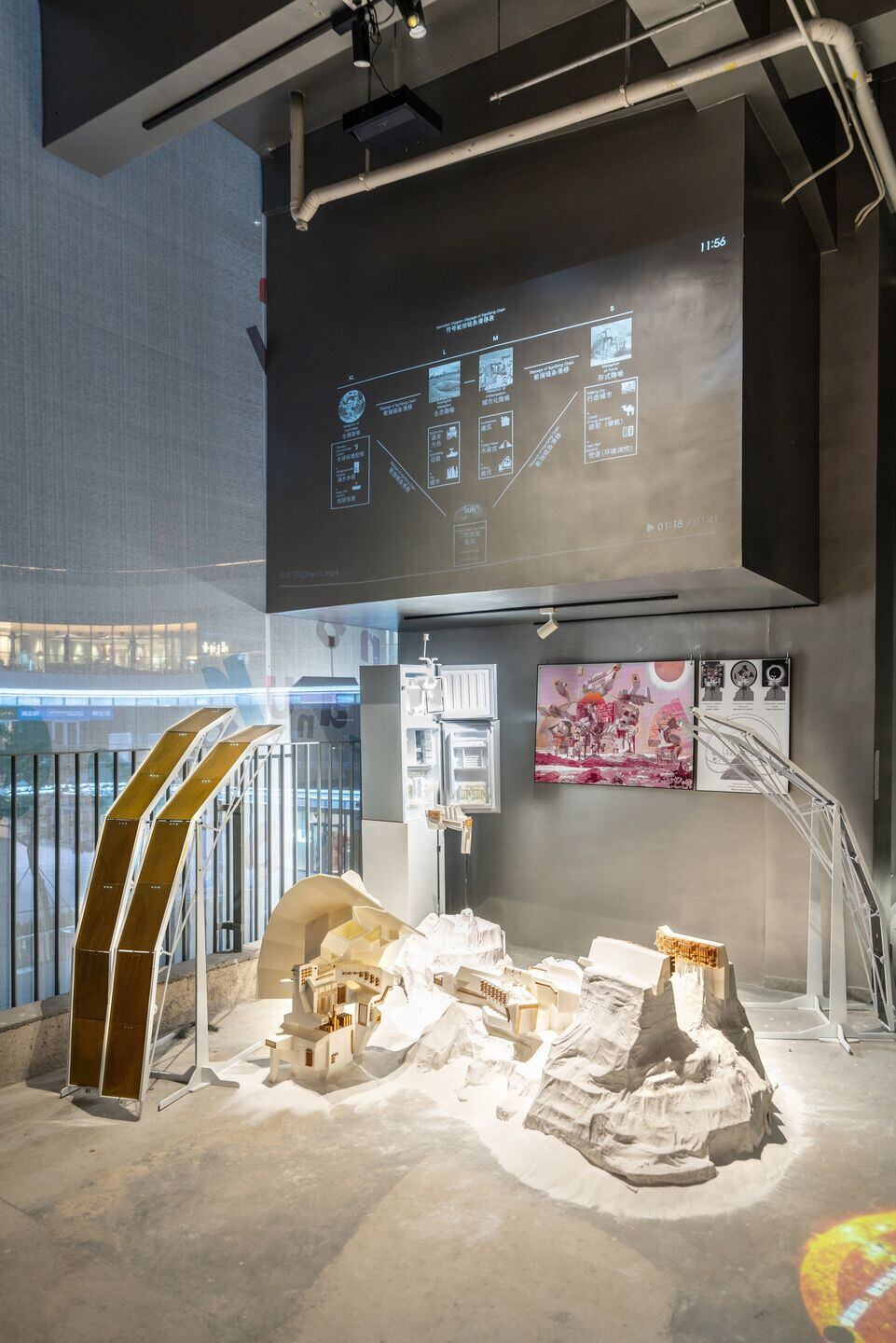
Team:
Design Firm: LIN architecture
Client: Inlight tech.
Lead Architects: YAN Yu, ZHANG Xiaomeng, LIN Lifeng
Drawings: Chai Zongrui, LIN Lifeng
Word: YAN Yu
Design Team and site construction: Chai Zongrui, Zijun Wan, Haitian Xie, Yizhuo Zhang, Di Li, RULIN YE, Zheyuan Lu, Yingxuan Liu, Fei Yang
Photographs: Zhuo Hongduo, DUO Architectural Photography
